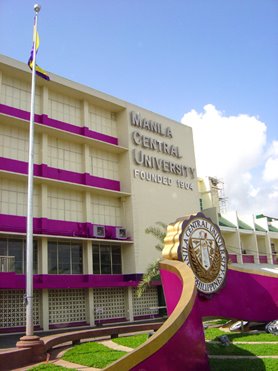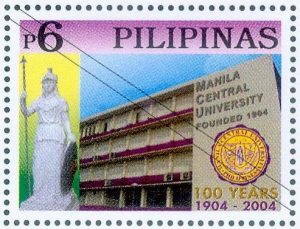Trivia about the Manila Central University
The Manila Central University had very humble beginnings. In 1903, at the request of several students from the University of Sto. Tomas and other individuals, Dr. Alejandro Albert organized a private review class. This review class developed into the Escuela de Farmacia del Liceo de Manila in 1904, with Dr. Albert as director, a post he held until 1915 when the Liceo was transformed into the Manila College of Pharmacy with Messrs. Albert, Alfredo L. Guerrero, Antonio C. Llamas, Feliciano Paterno and Filemon Tanchoco, all faculty members of the institution as incorporators. This was the first educational institution of its kind established and managed by Filipinos. Its success demonstrated the undoubted capacity and ability of the Filipinos in managing their own affairs in the educational field, especially then; at the time of its initial organization, it was barely four years after the establishment of the Philippine Educational System.
The Manila College of Pharmacy became one of the leading institutions of higher learning of its kind. Stable and secure in its position, the college expanded in 1929. Its board of trustees, answering a long felt need for the training of youth for dental services, opened the College of Dentistry. The Manila College of Pharmacy then became the Manila College of Pharmacy and Dentistry of the pre-war period. Opened and dedicated to give the best education for our youth, the college maintained its leading position in the educational field. Unfortunately, the war closed its portals in 1941. During the Japanese occupation, the enemy systematically plundered its extensive facilities, laboratory equipment, etc., and during the liberation period, it was further pillaged of everything but the shell of its two buildings. After the liberation of the Philippines, the board of trustees reorganized the college into the Manila Central College. In addition to pharmacy and dentistry, the reorganized institution offered courses in liberal arts, education, commerce and business administration, and Post Graduate courses in pharmacy. And finally in 1947, the College of Medicine was added.
In 1948, it became the Manila Central University (MCU) after having opened the College of Nursing and Graduate School and more than sufficiently meeting the requirements for a university. In 1949, the MCU inaugurated its 10-hectare campus in Caloocan City. The College of Optometry, Midwifery and High School and Kindergarten classes were also opened. Additional school buildings and service facilities were constructed yearly. Expansion projects and development programs for the whole university and individual colleges were continuously drawn to meet the educational demands and objectives of the university. The doctoral programs were opened in 1992, and in 1994, the College of Physical Therapy was approved. In 1996, the consolidation of all colleges in one campus took place. All programs located in Mayhaligue and Zurbaran were transferred to Caloocan City. As an educational institution, its mission is to develop well-rounded individuals through competent instruction and research in the acquisition of desirable personal traits and adequate knowledge and skills that will enable them to participate intelligently in community and national development efforts and imbue them with love of country and a sense of public service.
Stamps featuring the 100th Anniversary of the Manila Central University


Recent Comments